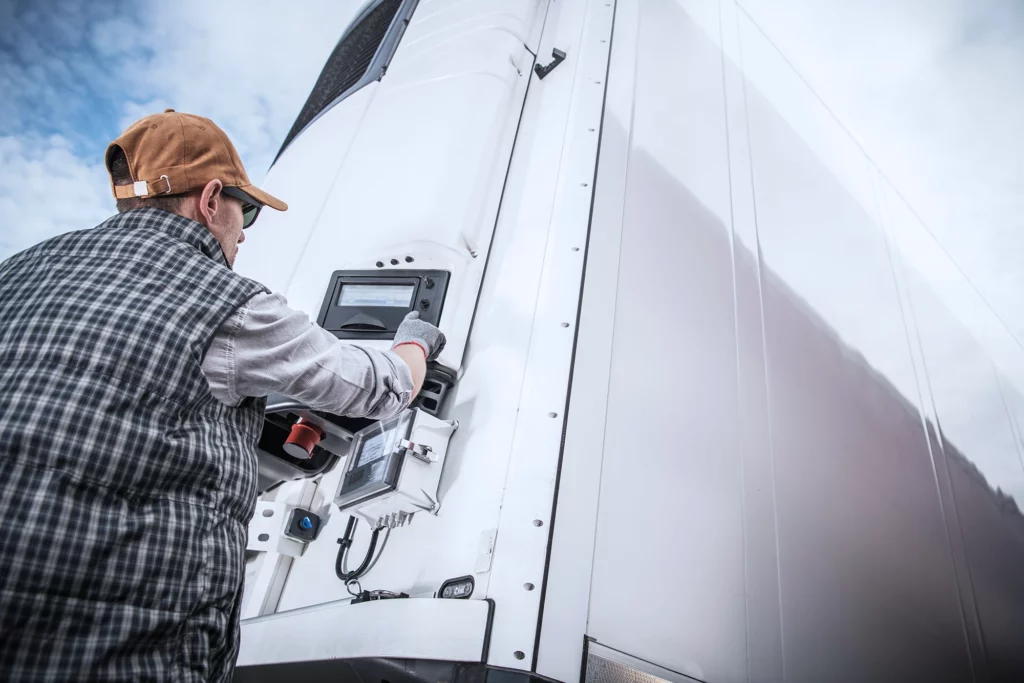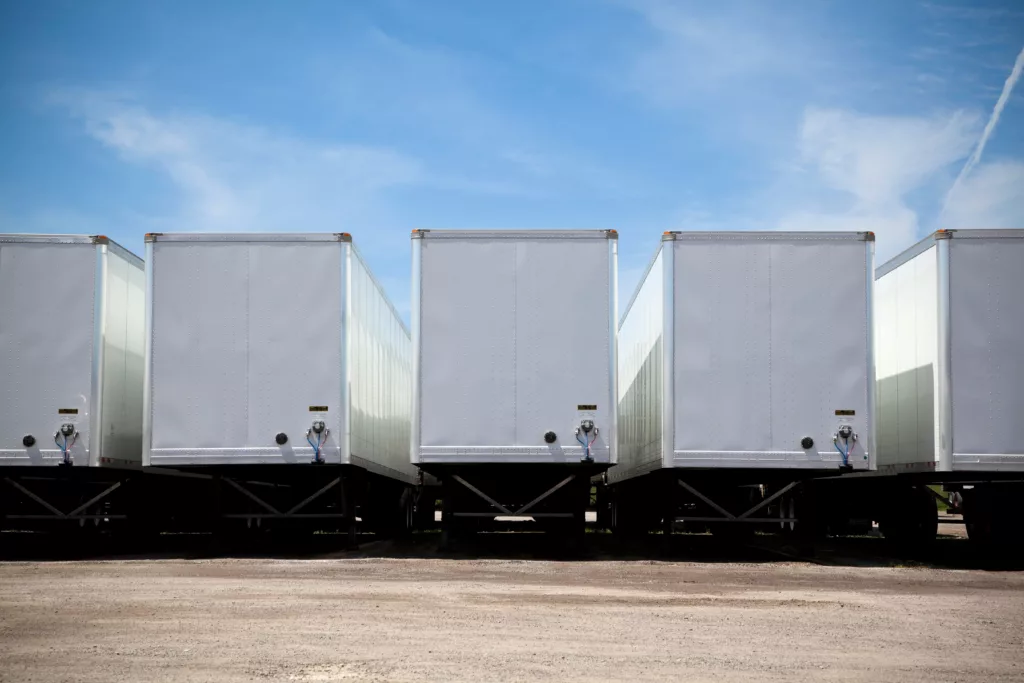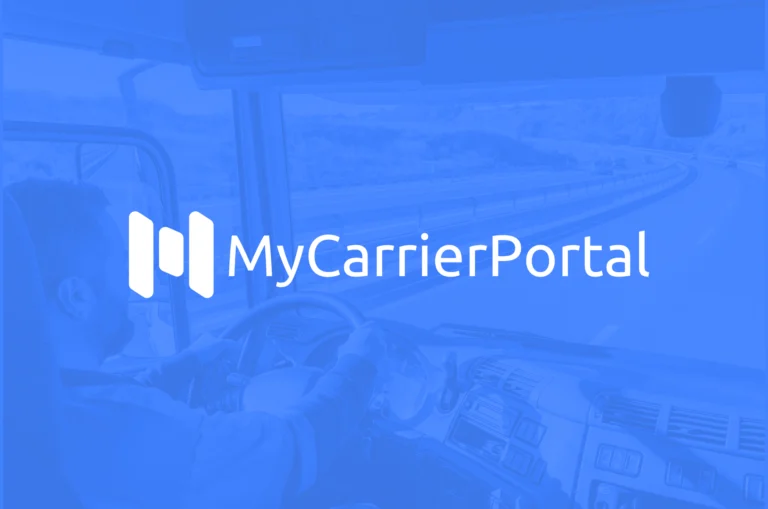Key Takeaways
- Importance of Temperature Control for Freight: Shipment temperature monitoring systems, crucial for maintaining the integrity of temperature-sensitive goods, ensure that products like pharmaceuticals, perishables, and other critical supplies reach their destinations safely, preserving quality and complying with regulations.
- Technological Integration and Real-Time Data: Employing real-time temperature tracking and cold chain monitoring solutions is essential for freight brokers, 3PLs, and shippers to increase awareness, prevent spoilage, and enhance customer service by providing up-to-the-minute information on shipment conditions.
- Industry-Specific Solutions: The necessity of temperature-controlled logistics spans various industries, from food and beverage to pharmaceuticals, highlighting the importance of choosing the right monitoring solutions that cater to specific regulatory and environmental requirements.
What Is a Shipment Temperature Monitoring System?
Cold chain monitoring also known as freight temperature tracking is the system of monitoring and controlling the transportation of temperature-sensitive products through the supply chain journey.
To ensure that conditions are monitored and controlled, freight brokers, 3PLs, and shippers will utilize a freight temperature tracking software/solution.
Other freight tech such as reefer trailer units and temperature sensitive devices are used by carriers to maintain product quality, meet transportation management regulations, and provide the data to tracking solutions.

Why Shipment Temperature Monitoring is Important
In the realm of freight transportation, ensuring the integrity of temperature-sensitive goods during transit is paramount.
Whether it’s perishable food items, life-saving medications, or delicate plants, maintaining precise temperature conditions is essential to preserving product quality and safety. This is where temperature tracking and shipment temperature monitoring solutions come into play.
By employing specialized freight technologies and strategic monitoring practices, businesses can effectively track and manage temperature conditions throughout the shipping process, mitigating the risk of spoilage, damage, and regulatory non-compliance.
In this article, we’ll delve into the features, benefits, and industries that can benefit from temperature tracking solutions, shedding light on the crucial role they play in modern logistics operations.
Different Language within the Temperature Tracking Sector
In the temperature tracking sector, various terms and phrases are used to describe the process of monitoring and managing temperature-sensitive shipments. Understanding these different terms is essential for navigating the industry and selecting the right solution for your specific needs. Here are some common terms and their meanings:
Temperature Tracking: This term refers to the practice of monitoring and recording temperature data during the transportation of goods. Temperature tracking systems typically utilize sensors or data loggers to measure temperature conditions inside shipping containers or vehicles.
Cold Chain Monitoring: Cold chain monitoring involves the comprehensive monitoring and management of temperature-sensitive products throughout the entire supply chain, from production or storage to distribution and delivery. This term emphasizes the need for maintaining a continuous “cold chain” to preserve product quality and safety.
Reefer Tracking System: A reefer tracking system specifically focuses on monitoring refrigerated or “reefer” trailers used for transporting temperature-sensitive cargo. These systems often include temperature sensors, GPS tracking, and remote monitoring capabilities to ensure precise temperature control during transit.
Temperature Controlled Logistics: Temperature-controlled logistics encompasses the broader logistics operations involved in transporting temperature-sensitive products. This term encompasses temperature tracking, cold chain management, and other related processes aimed at ensuring product integrity throughout the supply chain.
Temperature Monitoring Solution: A temperature monitoring solution refers to any system or technology used to monitor and track temperature conditions during shipping or storage. This can include standalone temperature monitoring devices, cloud-based software platforms, or integrated logistics solutions.
Thermal Mapping: Thermal mapping involves the process of systematically measuring and analyzing temperature variations within a shipping container, storage facility, or transportation vehicle. This helps identify temperature “hot spots” or areas where temperature control may be compromised.
Remote Temperature Monitoring: Remote temperature monitoring allows users to track temperature conditions in real-time from a remote location, typically using web-based or mobile applications. This enables proactive monitoring and intervention to address temperature deviations and ensure product quality.
Temperature Data Logging: Temperature data logging involves the continuous recording and storage of temperature data over time. Data loggers are used to capture temperature readings at regular intervals, providing a detailed history of temperature conditions during transit or storage.
By familiarizing yourself with these different terms and their meanings, you can effectively communicate with industry professionals, evaluate temperature tracking solutions, and implement the appropriate strategies to safeguard temperature-sensitive shipments throughout.
Features of a Temperature Tracking or Cold Chain Monitoring Solution
Consolidated, Real-Time Trailer Data
During transportation of freight, organizations have access to real-time data on load conditions at any time, from any carrier. This data can then be used to make informed business decisions and analyze patterns on the different lane routes, regions, and carriers.
High quality data is key. It gives organizations the details they need to optimize business operations and the confidence to control their freight through automation.
The other advantage is the ability to access this data anywhere. As long as you have an internet connection, you can track temperature monitored shipments using the power of the cloud.
Condition Monitoring & Alerting
Condition monitoring means users have the ability to set up alerting workflows and thresholds based on the reefer trailer conditions. Set the thresholds based on the product and shipment needs to ensure a safe transport and proper delivery.
In cases where trailer temperatures or conditions go above or below a certain threshold, users will receive updates that their freight may be compromised. These updates allow brokers to go and adjust the conditions and/or contact the driver of their load to help protect product quality.
Without alerts, organizations can easily lose thousands of dollars on a temperature sensitive load and incur the costs associated with failing to deliver.
Load Visibility
More than just an alert or monitoring system, cold chain monitoring systems enable location tracking of a shipment. This allows brokers to keep up to date with delivery times and location, eliminating any need for manual check calls to drivers on the road.
Even better, load visibility data can be communicated with customers to potentially adjust delivery windows in the case of delayed shipments.
Real-time visibility is the most sought-after solution to address the transportation management challenges that the industry is currently facing. Utilizing both freight temperature tracking and visibility is a must-have to manage risk by exception.
Reporting and Analytics
After condition monitoring data becomes available, users then have the ability to set up performance reporting and analytics based on all of your carriers. Set date ranges or select specific carriers for valuable insights into how your operations and partners are performing.

How Temperature Tracking Benefits Freight Brokers, 3PLs & Shippers
Prevent Product Spoilage
Maintaining product quality is necessary during the transportation process. Delivering customers spoiled or damaged products is harmful to business relationships and costly to broker’s wallets.
Here are just a few examples of products that could spoil:
- Foods like meat, dairy, fruits, and vegetables need to be refrigerated to maintain their freshness.
- Many medications and vaccinations become ineffective if not maintained below certain freezing points
- Certain plants and flowers must maintain higher temperatures and humidity to prevent them from dying
Spoiled products mean losses for brokers and a slash to their profit margins. Freight temperature tracking helps mitigate spoilage risk and protect freight brokers from losing out on high value shipments.
Increase Awareness
With real time condition data and load visibility, shippers, 3PLs and brokers will have increased awareness of shipment status. No more guessing or hoping that your load is in good hands.
Utilizing real time data and an alert system keeps organizations up to date and ready to act in when things go wrong.
Follow Regulations
Tracking temperature isn’t just a cost-saving benefit, it’s regulated by the federal government.
Government agencies and administrations will place condition-based regulations on the transportation of certain products to help prevent spoilage and protect consumers. Take for example, food products that aren’t regulated at a consistent temperature can lead to bacteria development and foodborne illnesses for those who consume them.
FDA has implemented the Sanitary Food Transportation Act (SFTA) which states:
Food may be at risk for physical, chemical, or biological contamination during food transport: Improper refrigeration or temperature control of food products (temperature abuse).”
Similarly, the recent Covid-19 pandemic required cold transport of vaccines implemented by the CDC: “vaccines are to arrive in a thermal shipping container at ultra-cold temperatures between -90°C and -60°C (-130°F and -76°F).”
Utilizing a temperature tracking solution will help brokers follow regulations, prevent costly penalties and fines, and ensure the protection of consumers.
Improve Customer Service
Shipping cold chain cargo and temperature sensitive shipments to customers means value must be placed on maintaining product quality. Doing so will ensure that customers receive orders in good condition. Customers receiving product in poor quality is bad for business relationships.
But more than that, cold chain monitoring and temperature tracking allows for brokers and shipper to communicate with customers. This is key to retaining customers and following through with good business practices.
Freight temperature tracking helps keep organizations up to date with both load location and temperature data/status, letting shippers and brokers relay the information to customers. This helps build trust and improve customer service satisfaction.

What Industries Can Temperature/Cold Chain Monitoring Be Used For?
These industries have both requirement and regulations for products to be consistently maintained at certain temperatures which makes them ideal targets for temperature tracking and cold chain cargo solutions.
Food & Beverage
Statistics show that over 1/3rd of human food is wasted. Ensuring the proper tracking of food during transportation can help trend this number in the right direction.
Certain foods and beverages need to be refrigerated 24/7 to maintain their quality and prevent spoilage to and from storage locations.
In July of 2020, the Food & Drug Administration (FDA) implemented a the New Era of Smarter Food Safety Blueprint. The blueprint “regulates and outlines achievable goals to enhance traceability, improve predictive analytics, respond more rapidly to outbreaks, address new business models, reduce contamination of food.”
To follow the safety blueprint as well as laws and regulations, food distributors need to use proper transportation methods, also known as reefer (refrigeration) trucks. The trailers can be set to the proper temperature for food & beverages and aid in compliance efforts all while preventing spoilage.
Medical & Pharmaceutical
Certain medications and drugs must be properly stored and kept at sub-zero temperatures for them to be effective for human consumption. The use of dry ice, special coolers, packaging, and insulated reefer trucks is necessary.
Vaccines, insulin, chemotherapy drugs must be refrigerated to ensure quality assurance. Many of which are life-saving and help keep people alive.
Transporting such sensitive loads mean high quality data and tracking must be used to ensure these drugs reach their destination in mint condition.
Agriculture & Horticulture
Most plants will start to die when temperatures reach below 45 degrees Fahrenheit, and some have even greater maintenance levels than that. Transporting a regular trailer full of plants during cold winter months means a great risk of losing everything – including profit margins.
Utilizing the right carrier and trailer to help regulate temperature, humidity, air circulation, and lighting is necessary, especially during long routes.
How Cold Can A Reefer Trailer Get?
Understanding the temperature specifications of reefer trailers is essential for safeguarding product integrity throughout the shipping process.
Reefer trailers, also known as refrigerated trailers, are designed to maintain precise temperature control, allowing them to accommodate a wide range of temperature requirements for various cargo types.
The temperature capability of a reefer trailer depends on several factors, including the specific model, insulation quality, and external conditions. Generally, reefer trailers can maintain temperatures as low as -22°F (-30°C) or even lower in some cases.
It’s important to note that extreme ambient temperatures, prolonged operation, and mechanical factors can affect the ability of a reefer trailer to maintain such low temperatures consistently.
Descartes MacroPoint’s Temperature Monitoring Solution
Descartes MacroPoint offers advanced temperature tracking capabilities for freight brokers, 3PL’s, and shipper to manage and move challenging temperature-controlled shipments with confidence.
Whether shipments need to be maintained in extreme heat, acute cold, or somewhere in between, Descartes MacroPoint Temperature Tracking Solution helps sustain the correct temperatures and conditions for any load while simultaneously providing real-time load visibility.
Enhance your supply chain data and protect sensitive freight loads.
Sourcing Reefer Trucks with MacroPoint Capacity Sourcing
Through Descartes MacroPoint’s Capacity Sourcing Solution, freight brokers, 3PL’s, and shippers can source specialized freight capacity such as refrigeration/reefer trucks and carriers.
One of the biggest challenges for industries like food & beverage, is the ability to source specialized freight, with most carriers not having the right trucks to match these loads.
Descartes MacroPoint’s solution helps brokers narrow in on cold chain cargo and capacity to help source numerous carriers to help fulfill their shipments.


